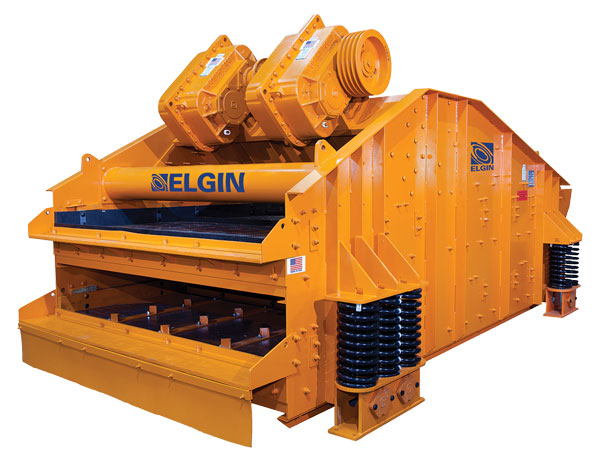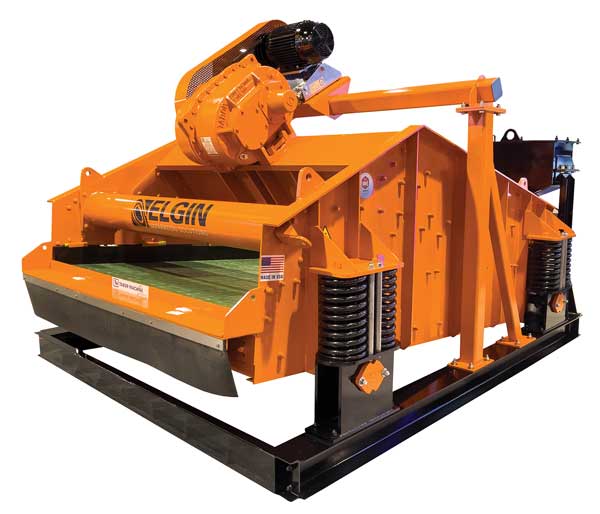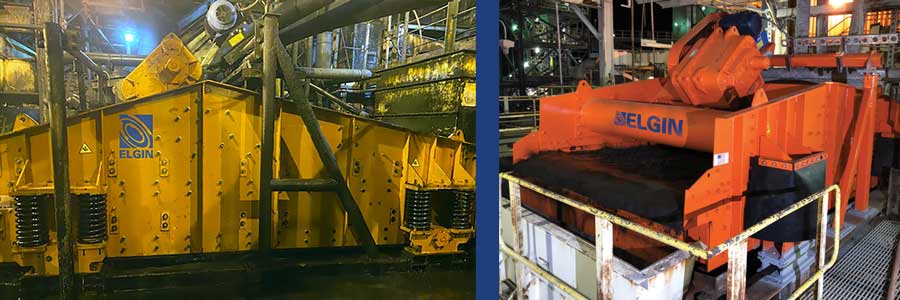In the demanding world of coal preparation, maintaining consistent performance from vibrating screens is critical to minimizing downtime and maximizing output. These screens are central to separation and dewatering processes. Establishing a proactive maintenance routine and understanding your equipment’s behavior are essential for keeping operations running smoothly. Todd Furrow, with Elgin Separation Solutions, recommends the following to maximize performance and minimize equipment downtime.
Know Your Equipment
Different screen designs serve different roles:
- Tabor Horizontal Vibrating Screens are ideal for material dewatering and magnetite recovery in tight spaces. Their compatibility with various screen media—like profile wire or polyurethane panels—makes them adaptable.
- Tabor Incline Vibrating Screens are typically used for scalping, sizing, and desliming. Motion type matters: linear screens handle heavy loads in confined areas, while circular motion designs help prevent clogging.
- Tabor Multi-Slope (“banana”) Screens handle high feed volumes and promote better fines separation, making them a favorite for raw coal processing.
- Tabor Reverse Incline Dewatering Screens are built for moisture control and fines recovery, especially with modular screen panels that offer flexibility.
- CMI Horizontal Vibratory Centrifuges (HVCs) handle coarse particle dewatering and are favored for their low-maintenance, durable configurations.

Tailor to Your Coal Type
Every plant faces different geological and coal characteristics. BTU levels and sulfur content vary regionally, influencing screen configuration, deck design, and equipment wear. For instance, coal in Virginia differs in hardness from coal in West Virginia, affecting screen lifespan. A customized approach ensures screens are suited to site-specific demands.
Focus on Residence Time and Feed Rate
Residence time—the duration material remains on the screen—impacts separation quality. Fluctuations due to feed variations or coal source changes require continuous monitoring and adjustments to feed rates or gravity flow.
Maintenance Matters
Maintenance schedules vary by equipment. While vibrating screens may require weekly inspections, HVCs may need only biannual attention. The exciter motors, which drive vibration, are the heart of the screen. Neglecting oil changes or failing to monitor bearings can lead to vibration issues or complete shutdowns. Routine checks using tools like stethoscopes or heat guns help detect early warning signs.
Similarly, drive systems with gears and belts need oil checks to avoid problems. Don’t overlook upstream components: wear on items like cyclones can result in poor separation, affecting everything downstream, including centrifuges and screens.
Train the Ear: Listen for Trouble
Seasoned operators often recognize equipment problems by sound. Learning the “personality” of each machine—its normal hum and rhythm—enables early detection of loose wedges, broken springs, or unbalanced motion. Regular audio monitoring is as valuable as visual inspections.

Stick to a Routine
In 24/7 operations, dedicated maintenance windows are critical. Weekly downtime should include thorough inspections—swapping worn panels, checking belt tension, verifying spring integrity, and confirming screen specifications like stroke, speed, and inclination.
Operators should follow manufacturer guidelines closely and always observe safety protocols. From securing guards to verifying screen clearance and amperage, each step ensures safer and more efficient performance.
In summary, vibrating screens thrive under a culture of consistent attention and proactive care. Understanding how your equipment behaves and addressing small issues early ensures long-term reliability and productivity in coal preparation.
Contact for More Information
Todd Furrow, Business Development Manager
Email: [email protected]
Visit Elgin Online for More Information

